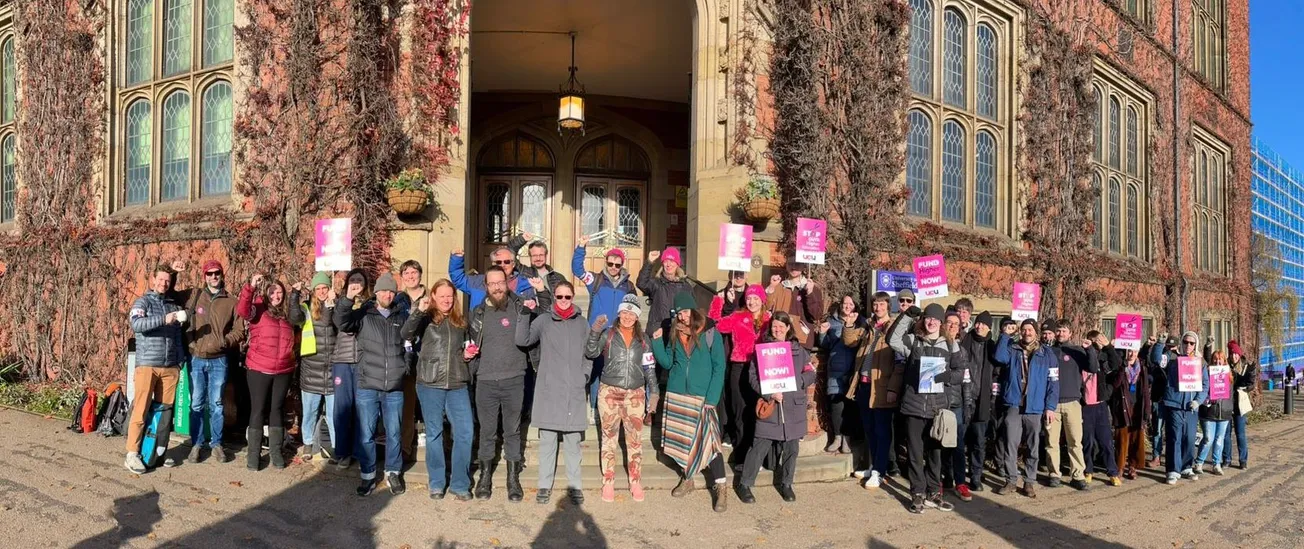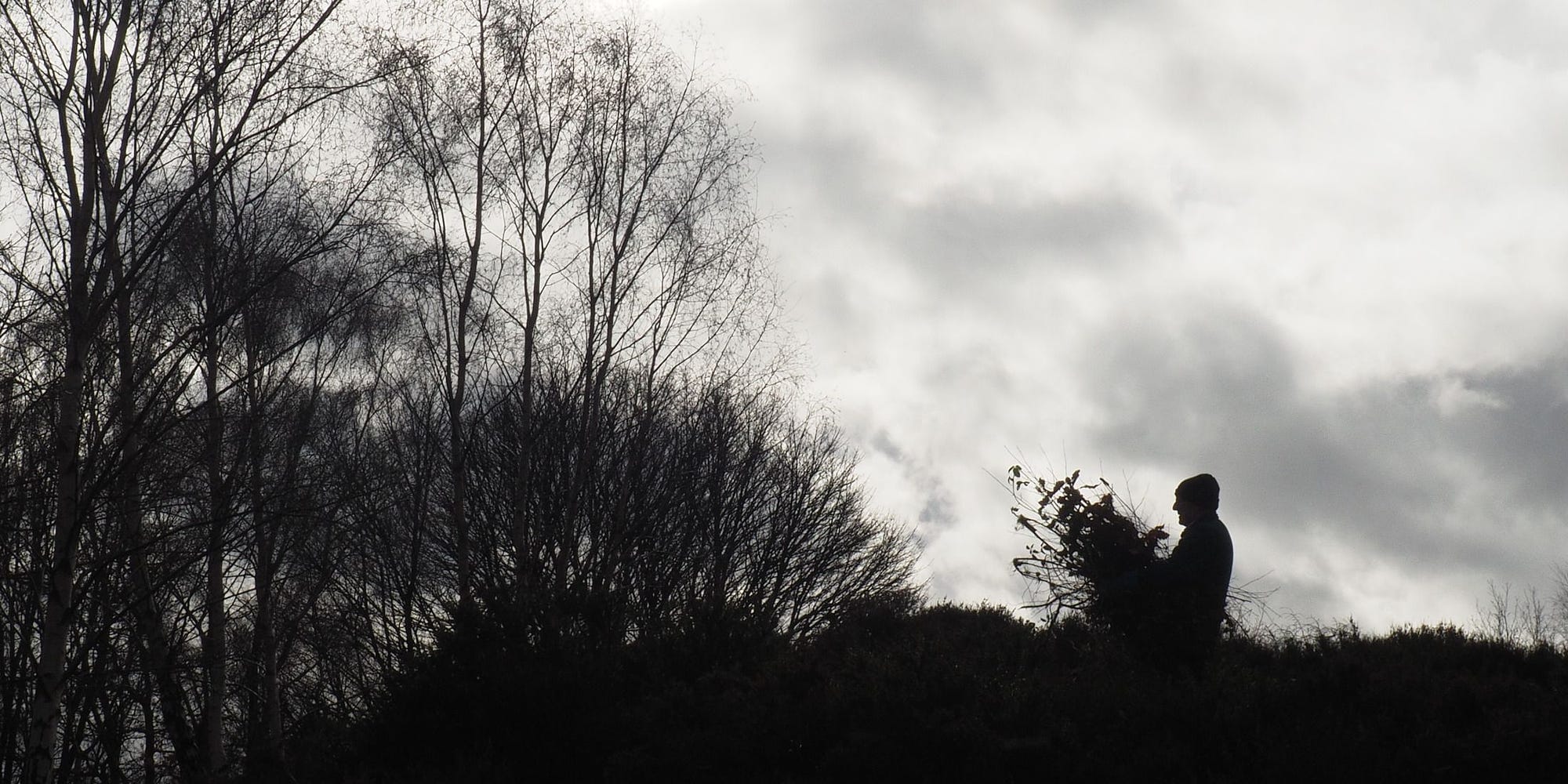Over the years, there have been plenty of deaths on Wadsley Common. Murders, unexplained disappearances, bodies in the snow.
You can’t help but think about it, if you head up there to volunteer with tree work in the winter months. It’ll usually be freezing, the wind howling, while far below the people of Hillsborough are safely sipping their hot chocolates as the thorns sting through your mittens.
I met a team up there one cold February morning fourteen years ago, clearing brambles and silver birch trees to try and restore an important lowland heath habitat. There was a knowledgeable city council ranger with a host of tools and time to chat, and a dozen or more volunteers from the Wadsley and Loxley Commoners, all cheerily carrying out backbreaking work. This was years before anyone used the phrase “nature emergency”.

In 2010, the council ranger at Wadsley met the volunteers regularly. Together they’d developed a plan for work on the common to improve the habitat for nature, to maintain the paths and trails, and to promote the 100 acre site to other Sheffielders. There was even a ranger-led walk programme, and public bird-box making sessions with council staff.
They’re still working up there, doing their best to carry on conserving their local landscape for the common good. Across the city, 100 or more formal and informal voluntary groups are doing the same, in city parks, woodlands, riversides and the other 800 or more wild (or wildish) places. This week, I met representatives of some of those voluntary groups who head out there battling the elements to keep our wild spaces healthy and sustainable and open to us all.
We were shown the ‘graph of doom’ illustrating how funding to support this kind of work in parks and open spaces has collapsed: an annual budget of £8.5 million for ranger and support services in 2010 is now at least £5 million less.
In the council’s ‘try and avoid going bankrupt at all costs, please’ budget of earlier this year, the parks, leisure and communities committee budget was the only department to actually go down, by £8.7 million pounds. I hear another year of cuts to the parks and countryside of Sheffield is planned after this one.
For a desperate accountant, it’s an easy choice to make. In Sheffield, the austerity era thinking has been: do we cut education, health, social care, development for jobs, or shall we cut parks, as the grass’ll keep growing?
In the end, since parks and green spaces are a non-statutory service (unlike education, social care and waste management), councils are officially allowed to cut the parks budget, so the decision is almost made for them nationally.
So councillors across the country just sigh and sign, and life seems to go on, as the slow deterioration in parks and wild places isn’t always easy to see — unless you’re a flood risk manager, an ecologist, or a parent wondering how to find somewhere to take your kids without dogs and dog mess. And, after all, we’ve got that army of willing volunteers to keep things more or less alright.

Dr Nicola Dempsey doesn’t think so. A senior lecturer in Sheffield University’s School of Architecture and Landscape, Nicola has studied relationships between people and their local landscapes across the globe.
Our tradition of volunteering in the UK is quite unique in the world, she says, but we may be coming to a pinch point. Changes in the retirement age are making it harder for people in their later fifties and early sixties to get stuck in after leaving work, along with a side of post-Covid exhaustion. And that’s starting to tell. “The mantle hasn’t been passed back to the local authority, so the pressure continues,” she says.
Nicola is also secretary of the Sheffield Green Spaces Forum who bring together the city’s various green and blue space volunteers to try and share ideas with each other, and lobby the council. I’ve met the group and its members many times over the last year, and at their meeting this week, it’s clear their patience is wearing thin.
“I think the city has lost it,” said chair Ted Talbot, adding that the support for Sheffield’s army of parks, woodland and river ‘blue and green’ volunteers isn’t enough. “For all the reasons we know. And we have to stop being quiet and polite about it.”
Ted knows whereof he speaks, having worked as a ranger, a council green space manager, and for national and local land charities. The idea of a choice between looking after a park and taking a child with special needs to school is at best misguided, he tells me.
“In the good old days, you would get all of the community of interests together, like the sporting people, the bird watchers, the dog walkers, and you’d get them all together with the local people and you’d spend two or three days thrashing it all out on big maps about how to manage their park,” he says.

It might be: mow here, football pitches here, no dogs here, a new fence here, patch of meadow here, that kind of thing. But now we have examples like Manor Fields and the Limb Valley where parks are doing things we hadn’t factored in a few years ago, like slowing flood water and planting to improve habitats for specific wildlife.
“So we've got this park,” says Ted, “and it functions in twenty different ways. It's providing an important civic delivery of stopping these houses down here flooding, it's storing this amount of carbon because these are active and healthy woodlands here and active and healthy soils too. We've got some allotments in this corner, so it's providing some food. The three local schools use it for education. It's used for parkrun and cross-country. There are some football fields and a basketball court. There's a cafe and some toilets so people with low mobility can improve their health and mental health.”
He pauses for breath. “When you look at this, parks and green and blue spaces are the Swiss army knives of our leisure services, and they're free and we’re about to just let them collapse.”
There are signs of hope. Groups like the Friends of the Porter Valley, the Friends of Graves Park, the Friends of Ecclesall Woods, the Sheaf and Porter Rivers Trust and Friends of Whirlow Brook Park can draw on expertise from fundraising, accountancy and marketing professionals to make a huge difference to their wild spaces.
Patient and effective volunteers in Parkwood Springs, Wardsend Cemetery and the Shire Brook Valley have also navigated their wild spaces to a better future by working with the council to bring in government grants.
And new groups can start afresh, sometimes attracting a slightly younger membership, like Greener Greenhill. “We can attract families with specific one off events, like planting, which are good fun as well as practically helpful,” says Lindy Stone from Greener Greenhill.
The council told me they wished to thank all the voluntary groups working around the city, that rangers, the parks service and community foresters still support voluntary groups, including tools and skills training, raising funds and liaising with local area committees and external ranger agencies from groups like the Eastern Moors Partnership, Green Estate and Sheffield & Rotherham Wildlife Trust. The council also has a new green space apprentice scheme, with ten trainees working on nature and health related projects.

Work in parks, rivers and green spaces will need to evolve, they added, not least to be in line with the local nature recovery strategy. Councillor Kurtis Crossland, Chair of the Communities, Parks and Leisure Committee at Sheffield City Council, said:
“The voluntary action that takes place across the city’s greenspaces, which are cherished by all of Sheffield’s communities, is nothing short of inspiring.”
“A key challenge and priority is finding ways to create a more balanced picture of social action, focusing on increasing voluntary activity in areas of the city that currently experience less engagement in such initiatives.”
Paying for parks
There is now tonnes of evidence about the health value of our wild places, director of Public Health Greg Fell tells me, to the extent that his department is now investing around £400,000 every year in some of our public open spaces. But it isn’t the £5 million every year that the green and blue lungs of Sheffield lost since austerity started.
The model of Friends of X Park has worked quite well, up to now, as long as it’s supported by keen champions in the local authority, who notionally own X park.
But the model can lead to the places with skilled, professional, confident, time wealthy and well organised park volunteers snapping up funding and attention – and an overreliance on sporadic grants.

We could bite the bullet and ask users to pay, or donate. There are at least 30 million visits a year to Sheffield’s parks, rivers and green spaces, says Ted, so a 17p donation for every visit by a dog walker, commuter or parkrunner would put back a decent ranger service, he observes.
Or we could come up with an external plan, where larger not for profits take over parks services and raise external funding for them. Newcastle tried this, found out it cost more, and is now about to bring its parks back into council control.
“It seems to me that if you think about the three big issues of our time, it’s the climate emergency, the nature emergency and you could call it the public health emergency,” says Ted Talbot. “And green and blue urban spaces are a big part of the solution for all of those.”
So given the list of benefits, should the provision of well managed parks and urban countryside sit with waste management and education as a statutory service?
“Yes,” says Nicola Dempsey. “None of the research into how we look after our parks has come up with a solution that is better than taxation. They’re not just pretty places, they’re not just a draw on resources, they’re part of the solution.”
David Bocking writes at the site below. Tomorrow he will be digging more into the public health impacts of Sheffield’s parks.
Comments
How to comment:
If you are already a member,
click here to sign in
and leave a comment.
If you aren't a member,
sign up here
to be able to leave a comment.
To add your photo, click here to create a profile on Gravatar.







